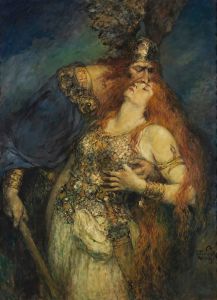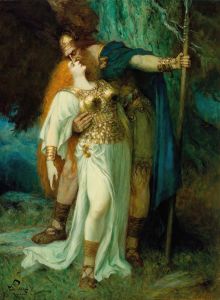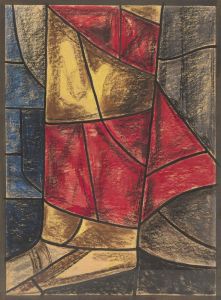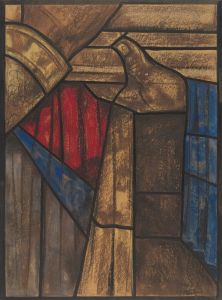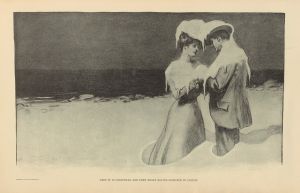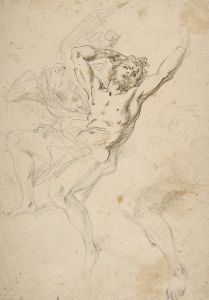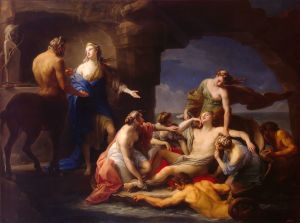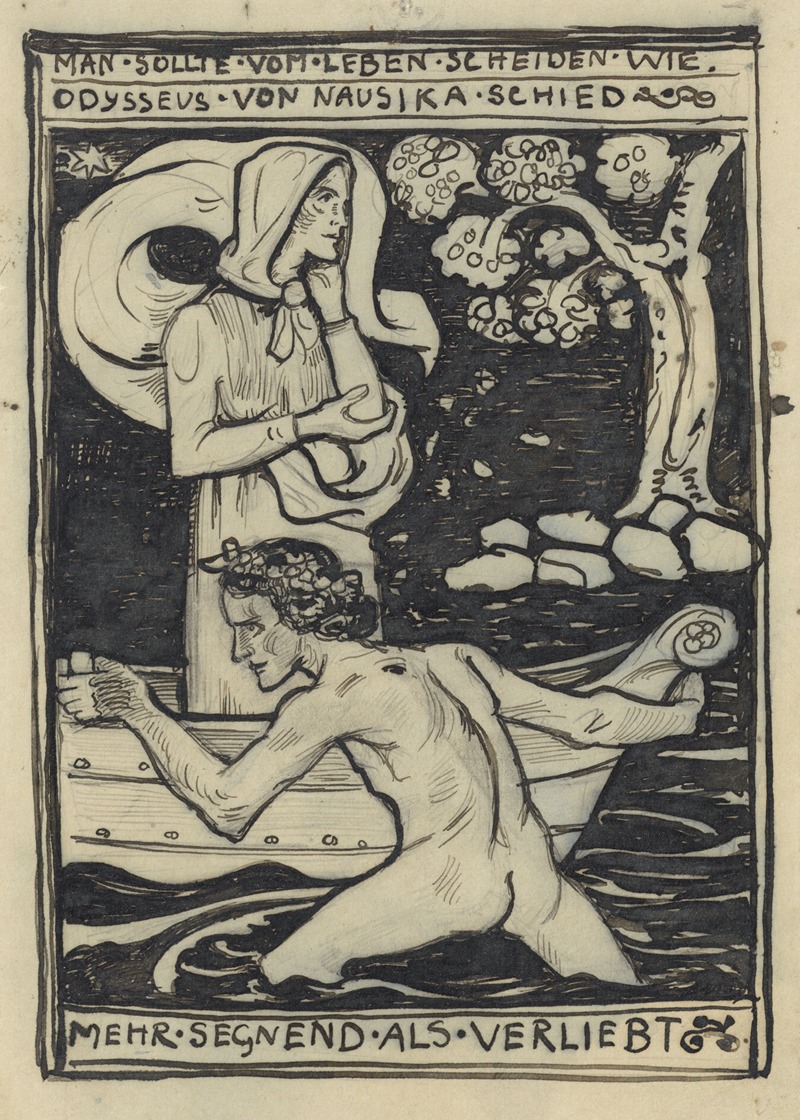
Het afscheid van Odysseus en Naussikaä
A hand-painted replica of Richard Nicolaüs Roland Holst’s masterpiece Het afscheid van Odysseus en Naussikaä, meticulously crafted by professional artists to capture the true essence of the original. Each piece is created with museum-quality canvas and rare mineral pigments, carefully painted by experienced artists with delicate brushstrokes and rich, layered colors to perfectly recreate the texture of the original artwork. Unlike machine-printed reproductions, this hand-painted version brings the painting to life, infused with the artist’s emotions and skill in every stroke. Whether for personal collection or home decoration, it instantly elevates the artistic atmosphere of any space.
Richard Nicolaüs Roland Holst (1868-1938) was a prominent Dutch painter, draftsman, and designer, known for his contributions to the Symbolist movement in the Netherlands. One of his notable works is "Het afscheid van Odysseus en Naussikaä" (The Farewell of Odysseus and Nausicaa), which reflects his interest in classical mythology and his ability to convey deep emotional narratives through his art.
"Het afscheid van Odysseus en Naussikaä" depicts a poignant moment from Homer's epic poem, "The Odyssey." In this scene, Odysseus, the hero of the story, bids farewell to Nausicaa, the Phaeacian princess who found him shipwrecked and helped him on his journey home to Ithaca. The painting captures the emotional intensity of their parting, highlighting themes of longing, gratitude, and the transient nature of human connections.
Holst's work is characterized by its meticulous attention to detail and its use of symbolic imagery. In "Het afscheid van Odysseus en Naussikaä," he employs a muted color palette and delicate brushwork to create a sense of melancholy and introspection. The figures of Odysseus and Nausicaa are rendered with a sense of grace and dignity, emphasizing their noble qualities and the depth of their emotions.
The composition of the painting is carefully balanced, with the two central figures positioned in a way that draws the viewer's eye to their interaction. Odysseus is depicted as a strong, heroic figure, yet his posture and expression convey a sense of vulnerability and sorrow as he prepares to leave. Nausicaa, on the other hand, is portrayed with a sense of quiet strength and compassion, her gaze filled with a mixture of sadness and understanding.
Holst's background in the arts and crafts movement is evident in the intricate details of the painting, from the textures of the clothing to the natural elements in the background. His training at the Rijksakademie van beeldende kunsten in Amsterdam and his exposure to various artistic influences of the time, including the works of the Pre-Raphaelites and the Symbolists, shaped his unique style and approach to storytelling through art.
Throughout his career, Holst was deeply involved in the Dutch art scene, not only as a painter but also as a teacher and writer. He was a member of several influential art societies, including the Vereeniging Sint Lucas and the Nederlandsche Kunstenaarskring, and he played a significant role in promoting the arts in the Netherlands.
"Het afscheid van Odysseus en Naussikaä" remains an important work in Holst's oeuvre, exemplifying his ability to blend classical themes with contemporary artistic techniques. The painting is a testament to his skill as an artist and his deep understanding of human emotion and mythology. Today, it continues to be appreciated for its artistic merit and its evocative portrayal of a timeless story.





